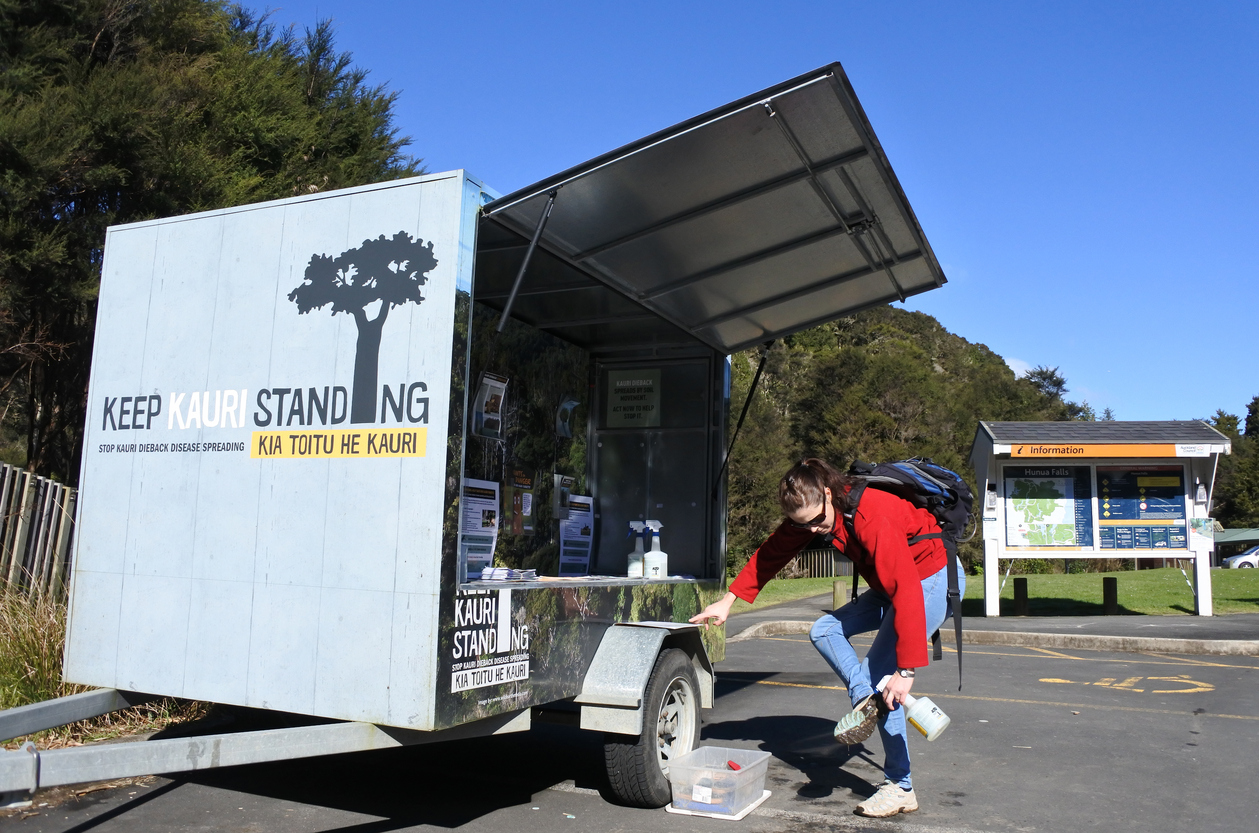The Government has set a goal to plant one billion trees over 10 years, including radiata pine. But new research suggests pine forests may harbour kauri dieback, prompting calls for caution from the Bio-Protection Research Centre.
The findings come from a Lincoln University student’s thesis, which indicated pine forests may incubate Phytophthora agathidicida – the organism that causes kauri dieback. Results found this organism reproduces much more rapidly in pine forests and pasture soil than kauri forest soil.
The Science Media Centre gathered expert reaction on the findings.
Associate Professor Bruce Burns, School of Biological Sciences, University of Auckland, comments:
What are the limitations of this research?
“The research certainly provides a number of results of concern on the potential for pasture and pine plantations to sustain populations of the kauri dieback organism, Phytophthora agathidicida. The main limitations to the research, however, are that all experiments occurred under laboratory conditions, not in the field, and on only one soil type (an ex-kauri forest soil). Whether the kauri dieback organism survives under different land uses in the field wasn’t determined, and the generality of the results to other soil types is not known. I note that P. agathidicida wasn’t isolated from the pine plantation and pasture soils examined in this work even though they occurred adjacent to infected kauri dieback stands. These limitations are reasonable considering the scale of the research undertaken, and the research does certainly provide warning signs that can’t be ignored.”
Do you think this research justifies putting a stop on the Government’s new pine plantations and why/why not?
“At this stage, the research doesn’t justify a stop to the Government’s new pine plantations everywhere, but does indicate that any sites where such pine plantations were planned adjacent to known kauri dieback infection sites or kauri forest in general should be avoided or delayed until the full extent of this risk is known.”
How significant are these findings?
“Despite my concerns about the limitations of this work, it is still highly significant. It extends the potential host range and land uses that could be susceptible to the dieback organism, including commercially significant ecosystems. As well, the research identified two species of Phytophthora that hadn’t been found in New Zealand before, and are known to cause disease on some plants overseas.”
No conflict of interest.
Senior Scientist & Senior Lecturer Nick Waipara, Plant and Food Research and the University of Auckland (Joint Graduate School), comments:
Do you think this research justifies putting a stop on the Government’s new pine plantations and why/why not?“Yes – but specifically in regions of Northern New Zealand where agathidicida (kauri dieback) has become widely distributed and is clearly contaminating many soils – we urgently need to examine the host range of this plant pathogen, with this research (and that of Jessica Ryder’s University of Auckland MSc). It is emerging that kauri is NOT the only plant host of agathidicida. That does not mean every infected host of agathidicida will succumb to disease symptoms and death (as kauri has) but clearly this pathogen can survive using other plants.
“Therefore biosecurity measures should underpin and inform all decisions when planting and developing new plantations of any tree species. That includes nursery hygiene, propagation and planting regimes, and then keeping newly-established plantations free from biosecurity incursions.”
Professor Euan Mason, School of Forestry, University of Canterbury, comments:
Do you think this research justifies putting a stop on the Government’s new pine plantations and why/why not?
“I would wait to see what independent reviewers say. Note that pine plantations are likely to be planted at sites outside the range of kauri, and so putting a stop on all new plantations is highly unlikely to be justified. The question is whether or not adding more pine plantations on grassland north of Hamilton would significantly add to the risk of kauri dieback. If the alternative was either pine or pasture, then an increase in risk by planting pine would seem unlikely, based on these results. If the alternative is pine or other tree species, and the capacity of pine to harbour the fungus over long periods is proven, then I would imagine we need to know whether or not the alternative species can also harbour the fungus, but I am not an expert in forest pathology.”
No conflict of interest declared.
Dr Nari Williams, Forest Pathologist, Scion, comments:
“It’s important to know that the study did not attempt to find if the pathogen was present in soil from those areas, nor determine its ability to spread.
“In the study, Phytophthora agathidicida was artificially introduced to soil taken from pine forests, pasture and kauri forests.
“Many soil types and plants may have the potential to harbour this pathogen, and this is being examined in a current study. It is not reasonable to single out specific plants or locations as higher risk than others at this stage.”
Do you think this research justifies putting a stop on the Government’s new pine plantations and why/why not?
“This study does not justify stopping pine planting. The thesis concludes that the results can’t be used to predict the relative risk of different land-uses to establishment of the kauri dieback pathogen.”
“This study is important for highlighting an area that needs more research, specifically the role of alternative hosts and other factors in both natural and modified ecosystems in contributing to kauri dieback.
“The finding that Phytophthora agathidicida has the ability to infect pine under artificial conditions does not indicate that pine is increasing the risk of kauri dieback to kauri.”
Conflict of interest statement: I was a supervisor of the study.
